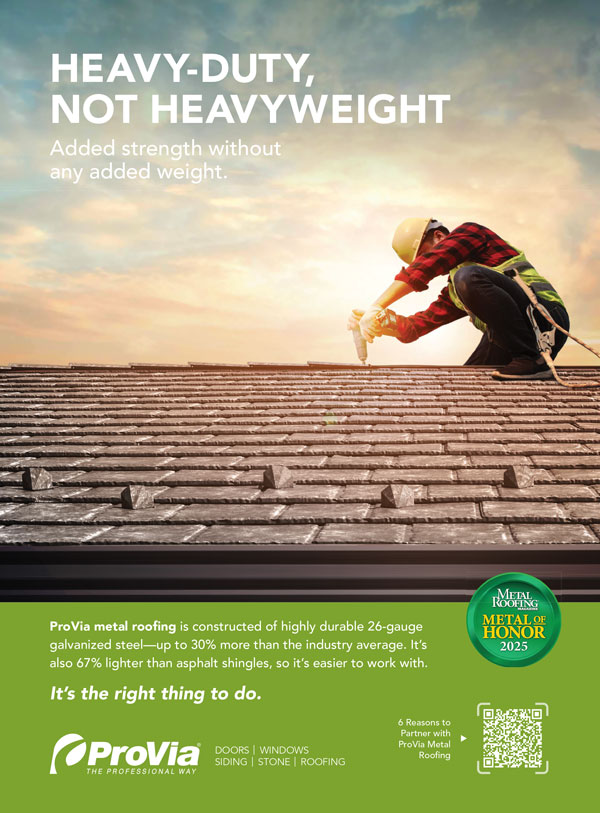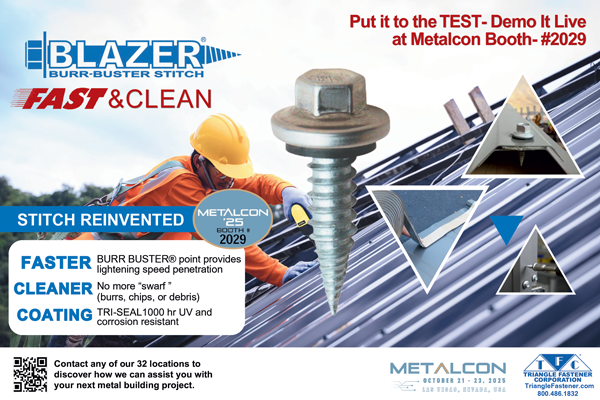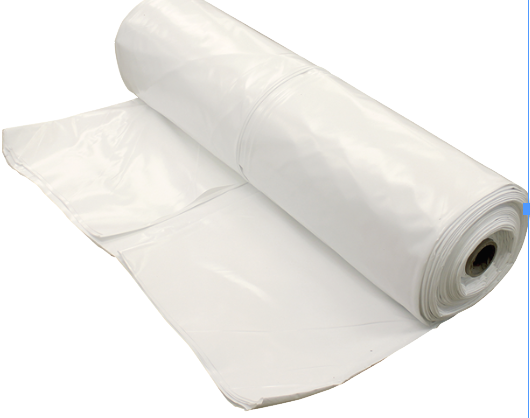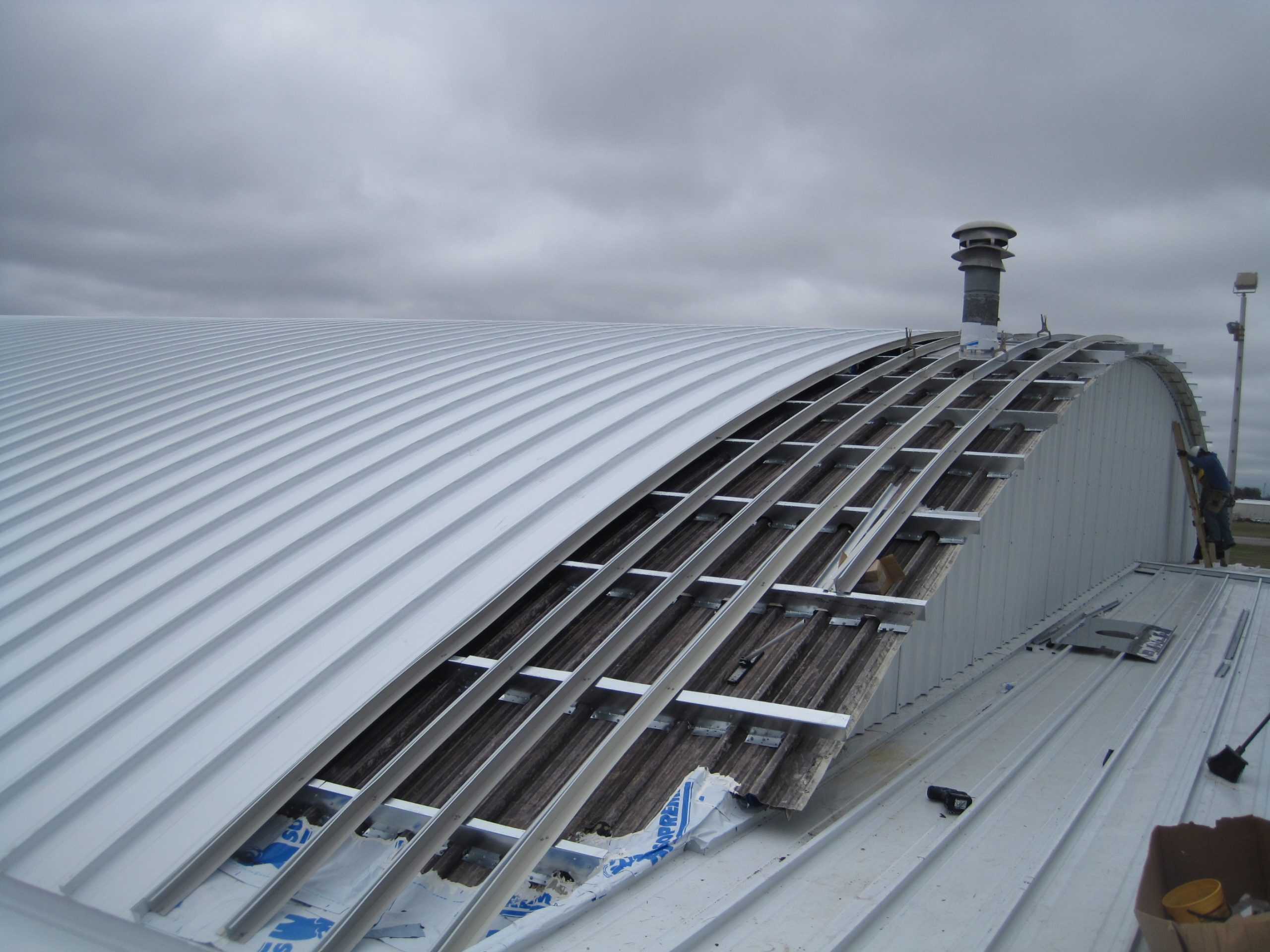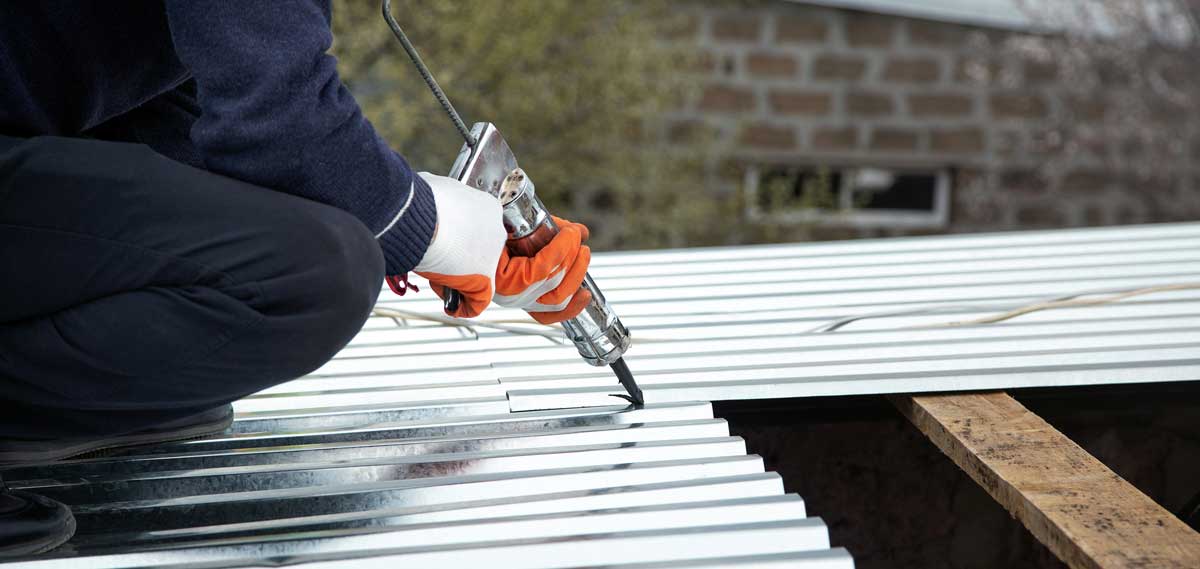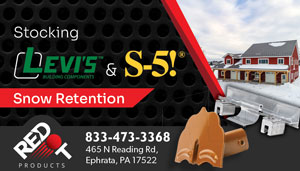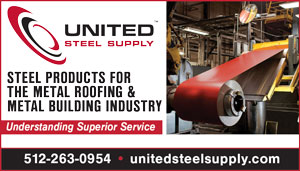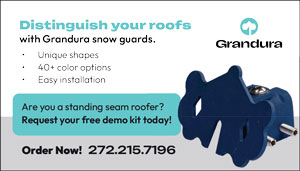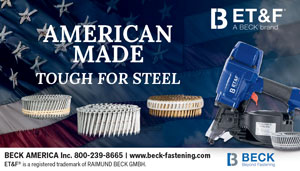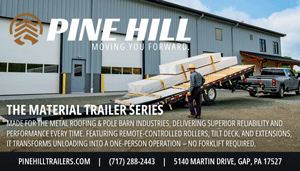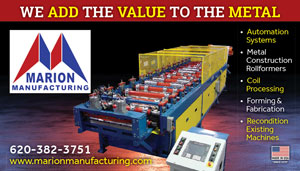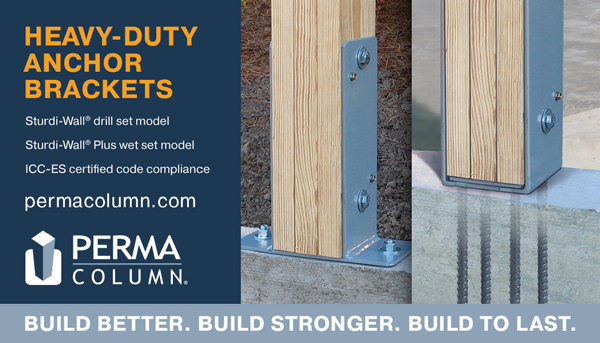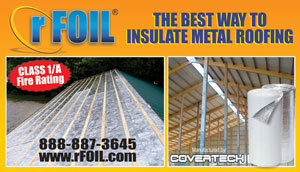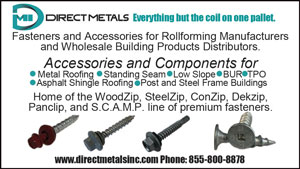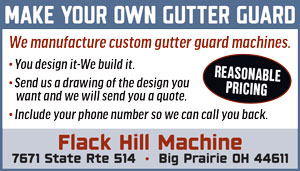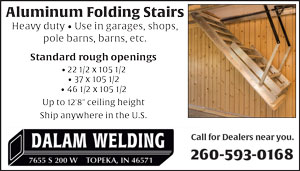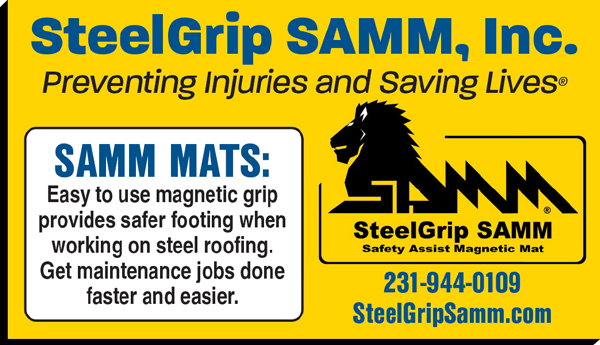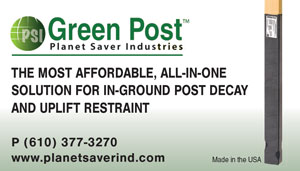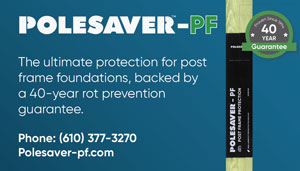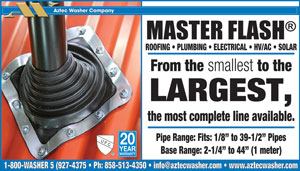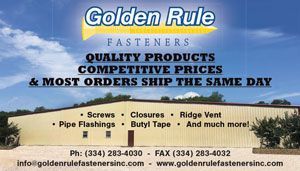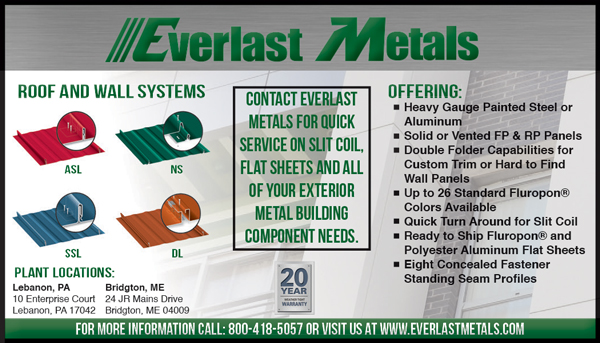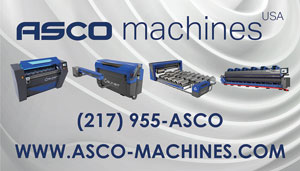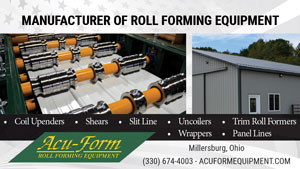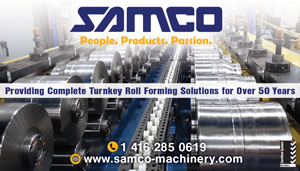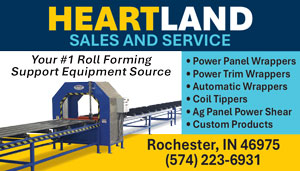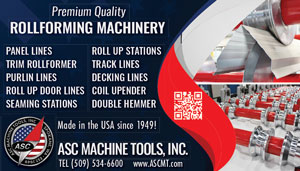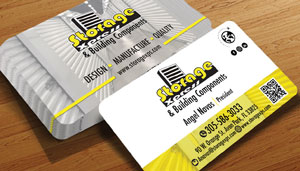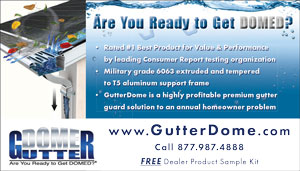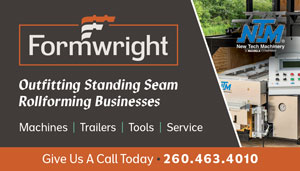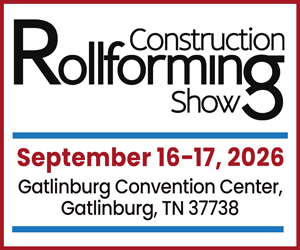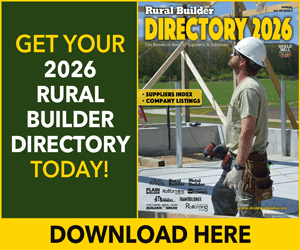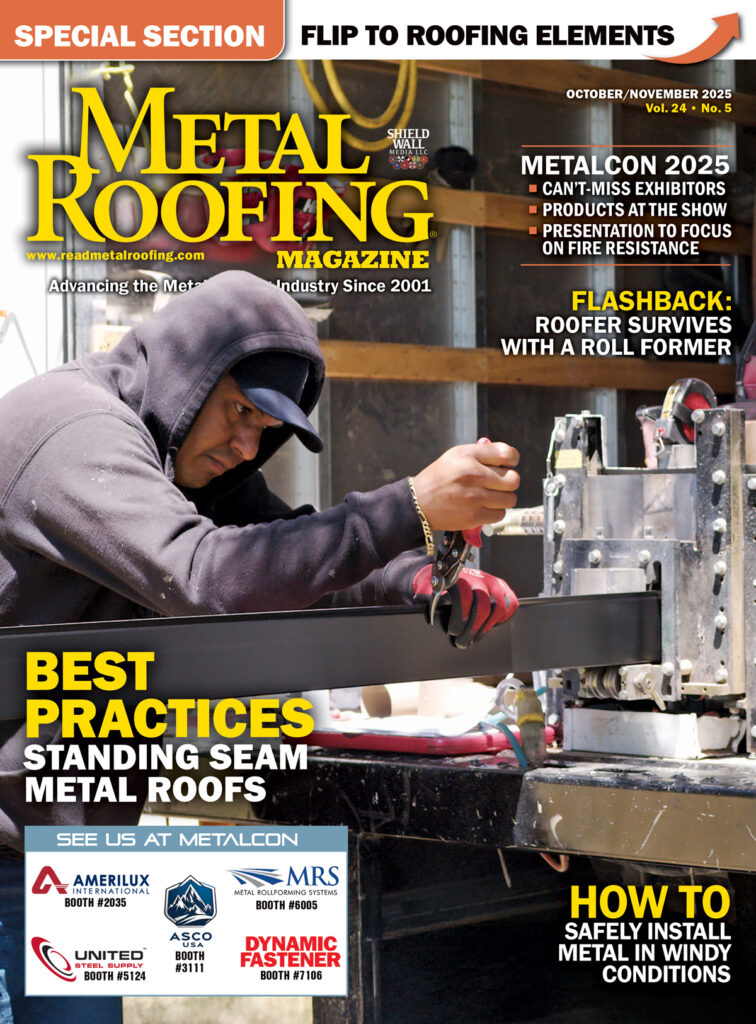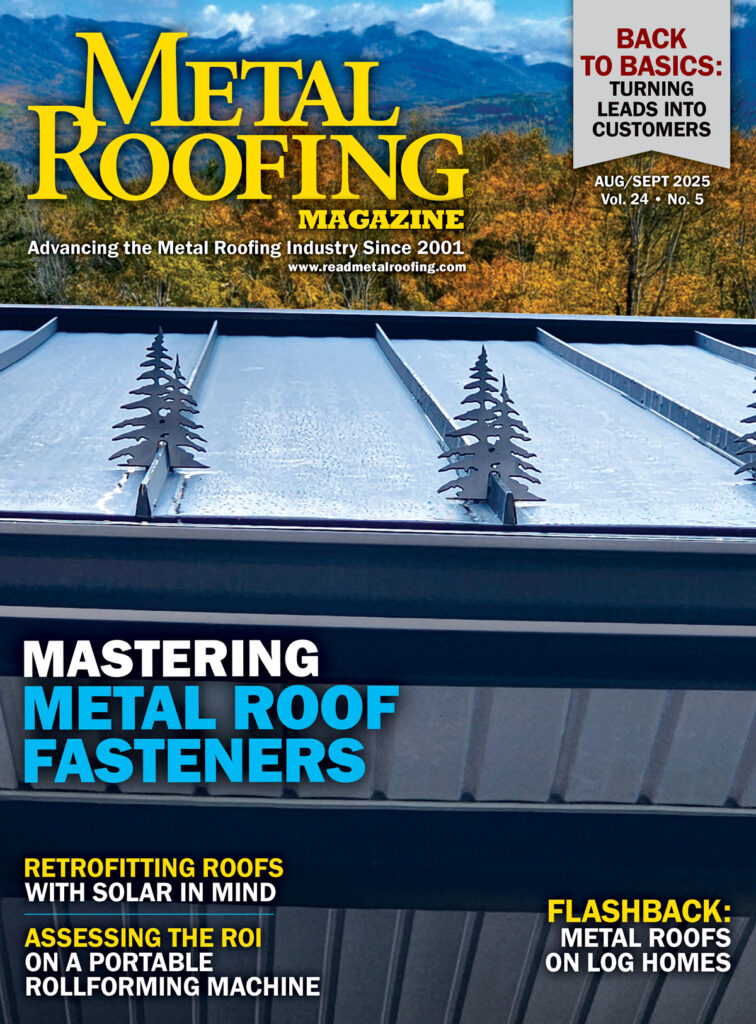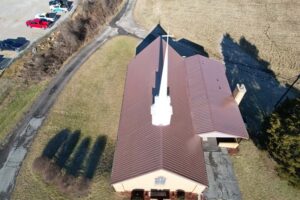By Andrew Mullen
A fastener is the common way metal roofing panels are secured to a roofing system substrate. The selection and installation of roofing system fasteners and screws has a direct effect on the performance and service life of these systems. Understanding how a fastener is chosen and performs within the roofing system is an important aspect of being a professional installer. While it would be logical to assume the roofing fasteners that come in a metal roofing package are expected to give corrosion-free performance for the life of the panel they are securing, that is not necessarily true. Many factors affect the corrosion resistance and holding power of a fastener. The factors include selection of the proper fastener installation tool.
There are two main types of metal roofing systems, exposed fastener and concealed fastener. Additionally, there are four typical substrates that these systems will be secured to. The correct fastener type will be determined by a combination of factors, including the type of roofing system, the substrate, the panel alloy, and the expected life cycle.
What Is the Substrate?
To determine the proper fastener for an application, you should first identify the substrate that fastener will secure into. You will find four typical types of roofing substrates in residential, agricultural, and commercial roofing applications:
Wood: Fasteners for wood can be found with sharp points, TP-17 points, and with “micro-bits” to aid panel penetration. Not all wood substrates are the same. A fastener that performs well in a dimensional lumber application (such as a 2′ x 4′) may not be the best choice for a roof deck comprised of OSB or particleboard. Many top-tier fastener manufacturers communicate pull-out strengths for a variety of different types of wood. This fact can be helpful when determining what fastener will provide the holding strength required by your project. While the popularity of plywood, OSB, and engineered board substrates increases, the industry standard of a #9 or #10 fastener is meeting competition from larger #12 diameter fasteners with course thread pitches designed for use in these “chipboard” wood substrates.
Metal Decking: Corrugated metal decking substrates are commonly found in 22-gauge galvanized metal. However, it can be all the way up to 16-gauge thickness in some highly specified buildings. Commercial roofs with steel decks commonly have insulation thicknesses thicker than 2″ and have created the need for long length fasteners, sometimes up to 16″ in length. Look for a fastener with a #1 self-drilling point and a thread pitch of 10 to 13 TPI to self drill and tap into the metal deck substrate.
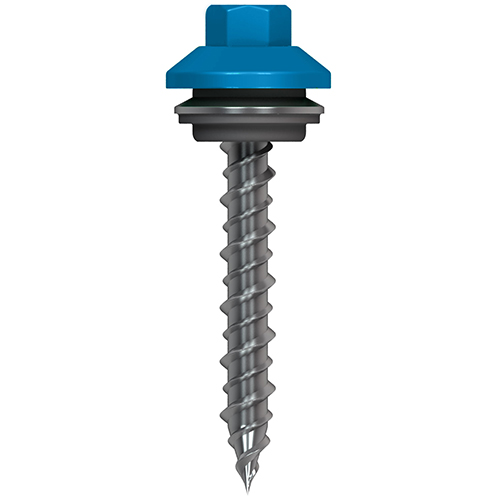
Steel: For steel beam or metal purlin substrate applications, there are two main styles of fasteners available: a “Tapper” or tapping screw and self-drilling screws. A tapping fastener requires the installer to predrill a hole into the steel substrate for the tapping fastener to be driven into. The fastener manufacturer should have data available suggesting a drill bit size for your application. Be sure to keep in mind the predrill size may change with the thickness of the substrate, even though the fastener diameter remains the same. Tapping fasteners are commonly available as a #14 fastener in full 302 and 304 series austenitic stainless steel to provide a high level of corrosion resistance.
Self-drilling fasteners are manufactured with integral self-drilling points, eliminating the need for predrilled holes. To use these fasteners, you must first determine the thickness of all steel/metal you will be securing into. Common self-drilling screws are found in #1, #3, and #5 drill points. The thread pitch of a self-drilling fastener is matched to the capabilities of the drill points. With this you do not use a coarse thread fastener in a fine thread application and vice versa. Be sure to select a self-drilling fastener with drilling capacity to meet your application needs.
If you choose a fastener with too small of a drill point for your application, such as a #1 point for 12-gauge steel, the excessive torque may snap the fastener (or worse, your wrist). If you choose a fastener with too large of a drill point, such as a #5 point for 16-gauge steel, the fine threads on the #5 self-drilling fastener may strip out. This instance may lead to the inability to secure the panel. Self-drilling fasteners come in a variety of corrosion-resistant choices, including zinc alloy capped head, stainless steel capped head, and full stainless bi-metal self-drilling fasteners.
Masonry: While rare, there are some instances where metal roofing and cladding panels are installed onto masonry substrates. In these applications, a predrill of the substrate must be done—typically ½” to 1″ deeper than the planned fastener penetration. These holes must be drilled and cleaned of dust prior to fastener installation. The fastener manufacturer should suggest the predrill hole size, which is typically 15% to 33% smaller than the outside thread diameter of the fastener. Fasteners for masonry or concrete substrates may have a variety of methods of attachment. A threaded fastener with a hi-lo thread pattern in 3/16″ or ¼” diameters are two of the most common. However split-drive nails in anchors and bent-rod anchors have also proven effective in roofing attachment applications.
Fasteners for Different Panel Systems
Exposed fastener panels use fasteners with rubber sealing washers to weatherproof the installation penetrations. There is a wide range of these types of fasteners, with many manufacturers offering up to six choices in corrosion resistance. Upgrades to traditional coated or galvanized carbon steel fasteners include zinc alloy capped or zamac molded heads, stainless steel capped or SCAMP fasteners, or full stainless steel varieties. These exposed panel roofing fasteners can be found from #9 diameters up to #21 diameters for replacement applications.
Concealed fastener panels use fasteners designed with internal drive and a low profile head designed to avoid contact with the underside of the roofing panel. Pancake head style fasteners are designed for panel clip attachment. Meanwhile, extra low profile (XLP) styles are designed for nail-strip or nail-fin clipless standing seam metal panels. Upgrades to traditional zinc-plated fasteners include long-life coated and stainless steel choices in 410, 302, 304, and 316 stainless steel. Most roofing applications require these fasteners in #10, #12, or #14 diameters ranging in length from ¾” up to 16″.
Metal Compatibilities and Coatings
It is important to understand the differences between metal alloys and how bare dissimilar metals in certain environmental conditions can promote premature corrosion and degradation. When working with copper or aluminum panels, it is particularly important to understand the exposure to agitating factors such as proximity to saltwater fallout, moisture, and air movement. An example would be when working with copper panels to only use copper rivets for exposed fastening points. Or in the case of exposed fastener aluminum panels, to use an all-aluminum fastener (such as the DMI ATEAM fastener) to avoid dissimilar metal reactions. If aluminum fasteners cannot be found for the application, a best practice approach is predrilling a pilot hole slightly larger than the fastener diameter. The next step involves sealing all edges of the hole with a barrier coating or sealant. Doing this prior to fastener installation can lessen the chances of a reaction.
With metal roofing panels, you also have the option of wet paint or powder-coated paint systems. East Coast Fasteners shared that wet paint is considered more forgiving and malleable when driving the fasteners and powder-coated paint can be more “brittle” with a risk of fracturing if fasteners are driven with too much force. East Coast also reminds contractors to consider the fastener coating versus the panel coating. Many metal panels have a 40-year or longer warranty, so you want a fastener with a coating warranty that matches.
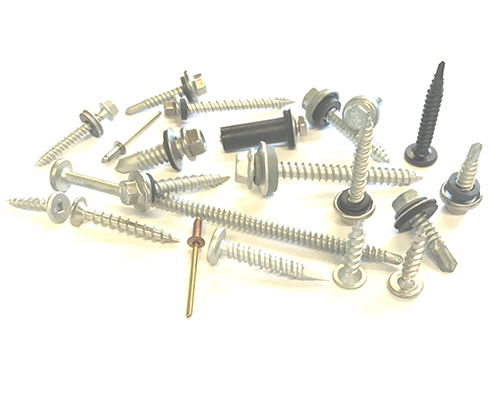
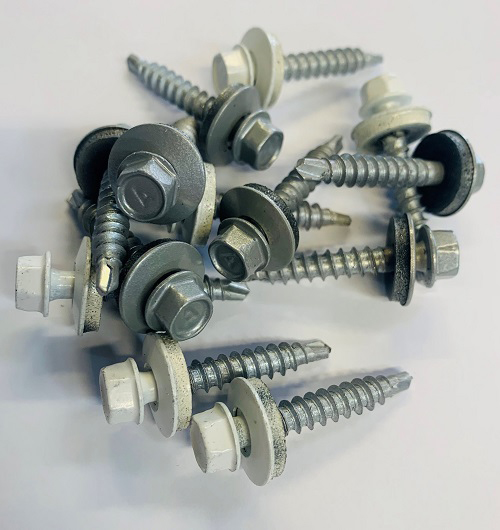
Fasteners for Repairs
According to Stephen G. Redmann, National Account Manager with Leland Industries, when a mechanically fastened roof requires a repair, how to fix it is strictly up to the roll former/distributor that supplied the steel. Parts are often developed for a specific repair on a particular job, which allows the facility owner future protection under warranty from the manufacturer. Consider stitch and goof screws, larger diameter parts with larger washers, or screw bolts with diameters up to #24, to name a few.
Building Code Compliance
Building codes promote the use of higher quality materials expected to increase the structural rigidity and extend the life of the building. These standards are quickly being specified, adopted, or mandated by many coastal cities, counties, and insurance bodies to encourage responsible building practices.
Examples of code requirements and recommendations include the 2014, 2017, and upcoming 2020 code version of the Florida Building Code, which requires corrosion-resistant fasteners for roof assemblies. FEMA has written recommendations that coastal construction and high wind areas only use stainless steel fasteners for roofing within 3,000 linear feet of a body of salt water. The Miami-Dade County Code compliance office has also implemented a fastener listing program that outlines additional corrosion-resistance and shear-strength standards required for metal roofing fasteners, both concealed and exposed. If you are in building code regulated zones, it is suggested that you determine if the fasteners in your system have certification listing numbers or meet building code guidelines.
Cost Concerns
When choosing a fastener, you are often presented with the choice between an entry-level economy fastener and a long-life fastener that may cost twice as much. It is important to put the extra cost into perspective within the roofing system’s total cost. Upgrading from an entry-level, non-warrantied fastener to a lifetime-warrantied, long-life fastener can be as little as 1.5% the cost of the roofing system. To determine the best value proposition, it is important to understand the performance expectations of the client. An example:
• 30 square metal roof at $400/square contract cost
• Entry-level fastener: 3,000 pieces at $0.06 each = $180
• Premium fastener: 3,000 pieces at $0.12 each = $360
• Difference of $180 or 1.5% of the $12,000 roofing system
Choosing the correct fastener for the job will not only increase the lifespan of the roof, but lessen the contractor’s liability and likelihood of callbacks due to fastener issues. Selecting the right fastener will also avoid job site delays and additional labor costs. Ask your roofing distributor about the cost and benefits of offering premium fasteners, understanding the proper fastener for your application will keep you one step ahead.


